Top 8 Best Under Sink Water Filters 🥇(April 2025)
Last Updated: 14 April 2025
In this article, we’re going to be talking about the best under sink water filtration systems available on the market.
By removing a large number of potentially harmful substances from your water, they make your tap water pure and drinkable. Also, in contrast to their average counterparts, the best under sink water filter devices are extremely affordable, easy to mount and a cinch to maintain.
And the best thing about them?
The best under sink water filters tend to be incredibly compact – which means they won’t take a lot of space underneath your kitchen counter. As a result, whether you have a large kitchen or a smaller one, you won’t have any problem creating space for the under-sink filters.
✅What is an under sink water filtration system?
As its name implies, an under-sink water filter is one that supplies potable water at your sink. It does that by rerouting your water through its casings, thereby eliminating any pollutants or harmful substances that may have contaminated your water.
💧What are the types of under sink water filter systems?
In contrast to what most people believe, the two types of under-sink water filter– simple and complex – aren’t categorized on the basis of how both of them work. Instead, their names come from the way both the types are mounted.
To understand this point, let’s consider both the types of under sink water filter devices which you can also find in our under sink water filter reviews:
Simple Under Sink Water Filter System
Such devices work by diverting all the cold water through their casing. They do not come with a separate spigot and deliver the water through the one that’s already mounted and working in your kitchen. That means that you cannot use these devices to filter the hot water.
Their working mechanism provides the under-sink devices with two benefits. First, since they do not need an additional outlet, simple water filters don’t require you to make any modifications to your countertop or sink. The second advantage, which stems from the first, is that they are easy to mount.
Pros– Inexpensive – Easy installation mechanism – Require no modifications to your sink |
Cons– Filter more water, so require you to change casing more often |
Conventional Under Sink Water Filter System
To mount a conventional device, you need to make some modifications to your countertop or sink. That’s because under-sink systems require you to divert the cold water pipe in such a way that its water passes through the new connection – which is nothing more than a short plastic tube.
Once the water passes through their casing, this device sends it to a separate tap – which is different from the pre-existing tap on your sink. As a result, while your pre-existing tap will continue to deliver unfiltered water, the new tap will only provide safe and healthy water.
Pros– Lasts longer – Provide better filtration – Eliminate more pollutants |
Cons– Expensive |
🚰What are the benefits of using an under sink water filter?
Following are the benefits which you can get from using such a system:
1. Improve water’s taste
Water with a small dosage of chlorine tends to give off an unpleasant taste. Similar is the case if your tap water contains more percentage of fluoride than what is considered beneficial.
Whatever the reason, having an under-sink filter would take care of that. After passing the water through its casings, it would ensure complete removal of such substances.
2. Make water safe to drink
What happens when the water that you’re supposed to drink doesn’t contain or give off an unpleasant odor or taste funny? That’s right; it means that it’s simply, clean and safe drinking water.
Furthermore, such devices eliminate chemicals and contaminants which, though they don’t give any visible signs of their presence, are equally dangerous. So you can be sure that the water is safe to drink.
3. Make water healthy
In contrast to what most people might believe, the functionality of such devices isn’t limited to removing potentially harmful and disease-causing substances from your water.
Instead, provided you’ve purchased a high-end model, it might be capable of adding healthy minerals to the water, thereby improving its quality and making it healthier.
4. Improve the development of kids
It goes without saying that as far as the physical development of kids is concerned, they need safe water or else you might expose them to water-related diseases i.e. dysentery and typhoid.
Conversely, if your kids are drinking safe water, not only would it help eliminate waste products from their major organs but would also regulate their body temperature.
5. Cost-effective option
Although a glance at their price tag might force you to think otherwise, an under-water filter will save you a lot of money, and not only by providing a homemade alternative to bottled water.
Instead, think of the diseases which you might contract by drinking unsafe water from the tap, Which would then require medical treatment and potential time off work.
💧Best Under Sink Water Filter Systems Review – Top 8
At the cost of sounding too politically correct, we have to say that all the devices which we selected for you after extensive reviewing are the best ones for home use. Furthermore, since each home’s clean water requirements are different, it is best if you make the final call.
Filtrete Advanced Under-Sink Water Filter
The Filtrete Advanced is one of those systems which provide a unique combination of high-end features and a competitive price tag. Therefore, if you want a budget model with all the bells-and-whistles, this is the device you must go for.
Technical Specs
- Filter Stages: 1
- Lifespan: 6 months per filter
- NSF Standard: 42, 53
- Filtration Reduction: Sediment, Chlorine Taste & Odor, Microbial Cysts
General Specs
- Price: $
- Dimensions: 4 x 6.8 x 14 inches
- Weight: 17 pounds
- Kit includes: 5′ x 3/8 inch tubing, 3/8 inch x 1/2 inch Faucet adaptor, 3/8 inch ferrule, 3/8 inch compression Hex Nut, 3/8 inch tube insert, 2 Phillips mounting screws, one 3us-pf01 filter casing, filter replacement reminder sticker, filter performance datasheet
- Warranty: 1-year (limited)
Features
First things first, the fact that this model comes with an inline design means it would easily attach to your kitchen or bath faucet. All you have to do to attach it is to turn off the water, follow the instructions to attach this device to the faucet and start enjoying pure water.
Such an arrangement allows this system to provide you with two benefits. First, you’d be able to mount it on your own and without the help of a professional. Second, with no elbows in its connection, it provides full water speed at 2.25GPM throughout the year.
Furthermore, since this undersink is NSF 42 certified, you can count on this filter to eliminate contaminants all the way up to 5 microns in size. Plus, with a rated filter life of up to 6 months or 10,000 gallons of water, it will also take care of, taste and odor problems.
While pollutants like lead, chromium, and VOCs aren’t to be found in normal water supplies, this system is taking no chances – as demonstrated by its NSF 53 certification which allows it to fight the most toxic contaminants that could disturb the chemistry of your water.
On top of everything else, you might find it good to know that all the three models in which this device is available – advanced, maximum and standard – offer replacement filters that are interchangeable with the device. So you won’t have to worry too much about where to find a compatible casing.
Pros
- NSF 42 and 52 certified
- Good rate of filtration
- Considerable flowrate
- Easy to mount
Cons
- Filters wear down quickly
Frizzlife Under Sink Water Filter-Quick Change
The Frizzlife Under-sink water filter is one of those devices which can discriminate between harmful and healthy substances that may have penetrated your water supply. Therefore, while you can count on it to take care of the former, this device will leave healthy substances alone.
Technical Specs
- Filter Stages: 2
- Lifespan: 2 years (or 1,600 gallon) per filter
- NSF Standard: 42
- Filtration Reduction: Lead, Chlorine, Bad Taste & Odor
General Specs
- Price: $
- Dimensions: 8 x 5.8 x 5.5 inches
- Weight: 52 pounds
- Kit includes: Filter housing, hanging bracket, 2 in 1 compound filter casing, stainless steel faucet, copper valve, water tubing
- Warranty: 2-years
Features
Starting with the best that this model has to offer, and it’s fast installation comes into play. Whereas the above-mentioned Filtrete device requires you to spend almost half an hour to mount it, the twist-in installation mechanism of the Frizzlife means you can have it up and running in less than 10 minutes.
Moreover, while its auto-shutoff feature doesn’t affect its performance, it does take the convenience that it offers to a whole new level. For, when you work on replacing its casing, the auto-shutoff would automatically disable the supply of water, allowing you to fully focus on the task at hand.
As for its performance, its 2-stage design allows this system to filter particles of up to 5 microns in size. The particles which it will keep at bay includes lead and 58 other contaminants. However, as stated earlier, it will allow essential minerals to pass through.
Lastly, while the environment and economics don’t normally go together, Frizzlife has been able to provide this unique combination.
It has positioned its core casing inside the housing so that when the casing wears out, you don’t have to throw away the whole plastic part. That way, while you can save money by not having to replace the whole part, the environment will benefit from having less plastic onboard.
Pros
- Easy installation mechanism
- NSF 42 certified
- Has a stainless steel faucet
Cons
- Relatively low flowrate
Nahla Premium Under-Sink Water Filter
Though not coming from as famous a brand as some other systems in this review, the Nahla Premium has all the features which you can expect in a high-end under sink water filter. So if you want a competitive model in a budget, it might suit you.
Technical Specs
- Filter Stages: 1
- Lifespan: 3 years (or 10,000 gallon) per filter
- NSF Standard: N/A
- Filtration Reduction: Chlorine, heavy metals, VOCs
General Specs
- Price: $$
- Dimensions: 8 x 6.4 x 4.6 inches
- Weight: 5 pounds
- Kit includes: 2 30″ long 3/8 tubing, hoses, filter
- Warranty: Moneyback guarantee
Features
What makes the Nahla Premium different from other models mentioned in this review is its ultra-high capacity. While most devices require you to change their filter within 6 months or a year, the fact that this model can handle 10,000 gallons means that you can use the same filter for up to 3 years.
Moreover, provided you have a standard 3/8’’ cold water line, you won’t have to do much to attach this device to your existing faucet. Just detach the water supply, detach the faucet and use the supplied hose and mounting bracket to mount this device.
Yet another thing which we found interested in this model is the fact that it mounts securely to the wall in your under-sink kitchen cabinet. That way, while it would remain away from your eyes, it would also stay out of the way. That means that you can keep on using that space to store equipment.
Despite being easy to mount, this device still eliminates up to 99.99% of all contaminants. The substances which you can count on this model to keep away from your glass of water include cysts, lead, manganese, and other chemicals. A fantastic under sink drinking water filter system.
Pros
- Huge capacity
- Filter lasts longer
- Wall-mountable
Cons
- Not certified by NSF
Woder 10k Gen3 Water Filter Device
As its status as the best-selling undersink water filter on Amazon makes clear, the Woder Gen3 water-filtration device has the trust of its users. However, before you doubt it, it’s the features and not the meager price tag of this model which has earned it this reputation.
Technical Specs
- Filter Stages: 1
- Lifespan: 3 years (or 10,000 gallon) per filter
- NSF Standard: 42
- Filtration Reduction: Chromium, heavy metals, Chlorine, etc.
General Specs
- Price: $
- Dimensions: 3 x 3 x 15 inches
- Weight: 85 pounds
- Kit includes: filter, a head with a built-in valve, inlet hose – 3/8-inch female compression by ¼-inch standard pipe thread, outlet hose- 3/8 m compression by 1/4 standard pipe.
- Warranty: 1-year
Features
At a time when the overwhelming majority of water filtration devices are turning to reverse osmosis device, the Woder Gen3 shows has turned to activated carbon filter media. That choice has allowed this device to boost a filtration capacity of up to 10,000 gallons or a minimum of 3 years.
The harmful substances that this filter eliminates is crucial for your good health. Apart from the usual suspects (cysts, odor, and bad taste), it also keeps at bay the likes of chromium 6, mercury, and even cancer-causing substances.
Still, despite showing such a ruthless performance against harmful substances, the Woder 10k lets essential minerals pass through its checking. That’s why in the first few days you might notice that its taste is a bit mineral-like.
As for its flowrate, you might find it good to know that within the temperature range of 43 to 100 degrees, this device provides water at a rate of 2GPM. It can withstand water pressure of 125PSI and all the parts of this device are tested against relevant NSF standards.
Pros
- High flowrate
- Eliminates chromium
- Competitively priced
Cons
- Not good at filtering salt
CuZn UC-200 Under-Counter Water Filter
The UC-200 under-counter water device has been designed to reduce the hardness of municipal water by removing common contaminants. That means that as long as your water isn’t excessively hard – in which case this filter might not be suitable for you – the UC-200 is worthy of your attention.
Technical Specs
- Filter Stages: 3-stage under sink
- Lifespan: 5 years (or 50,000 gallon) per filter
- NSF Standard: 42, 61
- Filtration Reduction: Chlorine
General Specs
- Price: $$
- Dimensions: 5 x 4.5 x 15 inches
- Weight: 8 pounds
- Kit includes: filter, 36″ Long 3/8″ x 3/8″ Braided Stainless Steel Compression Hose
- Warranty: 5-year
Features
One of the major reasons why some people are against water filters is their maintenance costs – as they think that the recurring costs of replacement of a casing are equal to, if not more than, the original cost of the whole device.
Luckily for those people, the 3-stage UC-200 won’t require you to replace its cartridge for up to 5 years. That’s because the material used inside this system is able to treat up to 50,000 gallons of water before needing replacement, so you won’t have to purchase a new casing anytime soon.
What’s more, the fact that the system lasts longer doesn’t mean that it would stop being effective after some time. Instead, with its 3-stage filtration – and a setup which consists of micro sediment membranes and coconut shell carbon – it reduces the presence of odor in your water to negligible levels.
On top of that, the stainless steel compression hose of this system means that it won’t be susceptible to rust and corrosion. Also, with the entire device being bacteriostatic, you won’t have to worry about mold or bacteria making their roots inside the machine.
To further sweeten the deal, the manufacturer of this system gives the option to have an install kit for all non-standard installations. That said, as we found out during our review of the UC-200, you might not be needing the additional kit since this device is compatible with most kitchen faucets.
Pros
- Filter lasts 5 years
- 3-stage filtration
- Bacteriostatic equipment
- Stainless steel hose
Cons
- Not for removing permanent hardness
APEC WFS-1000 Super Capacity Premium
As long as you aren’t looking for a system that could reduce or remove TDS from your water supply, the APEC WFS-100 Super Capacity Premium Filter won’t disappoint you. Offered with a 1-year warranty, this durable carbon filter’s unique selling points lies in its ability to rid your water of chemicals, odors, and taste.
Technical Specs
- Filter Stages: 3-stage under sink
- Lifespan: 1 year (or 10,000 gallon) per filter
- NSF Standard: N/A
- Filtration Reduction: Chlorine
General Specs
- Price: $$
- Dimensions: 6 x 15 x 12 inches
- Weight: 14 pounds
- Kit includes: 100% Lead-Free chrome faucet, plus FDA Certified JG Food grade tubing
- Warranty: 1-year
Features
All of the three stages which this filter uses to purify water serve a special purpose. For instance, the first stage which is made of 10’’ propylene sediment separates dust, particles, and rust from the incoming water before sending it through.
Then comes the 2nd stage whose carbon black construction empowers it to remove chlorine, VOCs, taste, cloudiness, and odor from water. After which the water passes through the 3rd stage where the extruded carbon black filter removes the remaining chemicals.
Still, despite employing such exhaustive filter systems, this model won’t trouble the important minerals and alkalinity which are responsible for keeping water healthy. And you don’t even have to believe in what we’re saying; a mere sip of its treated water would be enough to verify this claim.
Furthermore, while it would remove existing contaminants from your water, this filter system won’t add those of its own. That’s because it has a lead-free chrome faucet and an FDA certified food grade tubing. No wonder, then, that this model comes with a 1-year warranty as well.
Pros
- Lead-free chrome faucet
- Comes with a 1-year warranty
- Keeps essential minerals
Cons
- Relatively difficult to mount
Aquasana 3-Stage Max
To make sure that you get nothing but high-quality water, the Aquasana Max employs filter in four stages to remove most of the components which might pollute your potable water, including pesticides, herbicides, chlorine, and VOCs.
Technical Specs
- Filter Stages: 3-stage under sink
- Lifespan: 6 months
- NSF Standard: 42, 53, 401
- Filtration Reduction: Chlorine, VOCs, heavy metals (among others)
General Specs
- Price: $
- Dimensions: 2 x 12 x 12.9 inches
- Weight: 7 pounds
- Kit includes: AQ-5300+ filter system, Faucet, Filter Cartridges (3), Screws with anchors (2), Faucet Rubber Washer, Faucet Spacer, Faucet Washer, Faucet Nut, Battery, Chrome nut, Plastic collar (2), Plastic tube insert, Brass nut, Brass tube insert, Brass Tee, Poly Tubing
- Warranty: 180-days
Features
To increase the utility of this system, Aquasana provided all three filters with different technologies. While the first filter uses ion exchange to remove rust and silt, the second and third filters rely on activated and catalytic carbon technologies, respectively, to improve the quality of your water.
In contrast to most systems which come with their own faucet, the twist-off design of the Aquasana makes its filters incredibly easy to replace. Once a filter needs replacing, all you’d have to do is to just twist off the existing filter and twist in the new one, with the whole process taking less than 10 minutes.
What’s more, it won’t keep you guessing as to when the filters need changing. Instead, once its filters have outlived their utility, this water filter starts displaying a notification to tell you of the same, after which you could replace the filters.
Furthermore, you don’t have to believe in the vacuum’s word about it removing 77 contaminants from your potable water. Instead, with all three of its filters getting certifications from NSF standards 42, 53 and 401, you have no reason to doubt the performance of this unit.
Lastly, while this under-sink water filter provides you with a choice of three different faucets – bronze brushed nickel or chrome – there’s one thing that unites all of them: all the faucets are 100% lead and metal-free. Oh, and if things still go wrong, you can avail the 90-day satisfaction guarantee of this model.
Pros
- Filter change notification
- Comply with NSF 42, 53 and 401 standards
- Offer a 90-day satisfaction guarantee
Cons
- Average quality of O-rings
3M Aqua-Pure Water Filter System
While on one end it removes chlorine, taste, and odor to make your potable water potable, the 3M Aqua-Pure reduces rust and particulate to preserve your fixtures and plumbing, on the other. No wonder, then, that the under sink filter reviews which this system has got all sing paeans of its performance.
Technical Specs
- Filter Stages: 2
- Lifespan: 6000 gallons (12 months)
- NSF Standard: 42, 53
- Filtration Reduction: Chlorine, VOCs, turbidity, odor, taste heavy metals (among others)
General Specs
- Price: $$
- Dimensions: 8 x 10.9 x 3.2 inches
- Weight: 5 pounds
- Kit includes: e hardware, faucet (AP-DWS1000 only) and pipe connections
- Warranty: 10-year
Features
Though it doesn’t deliver an advanced notification to remind you to change its filters, the 3M Aqua-Pure does the next best thing with its automatic shut-off feature. This model turns off its water supply the moment filter cartridges are beyond repair, so you’d have to change the filter to receive water.
Moreover, both the stages of this dual-stage under-sink water filtration system use carbon as the media to absorb and remove impurities. That allows the 3M Aqua Pure to remove everything from particulates and rust particles to chlorine, VOCs and turbidity from your water.
Besides, you don’t need help from any professional or tools when replacing its old cartridge with a new one. All you have to do is to just twist off the existing filter cartridge, mount the new one in its place and start getting an endless supply of water once again.
Apart from that, this model works at a higher water pressure of up to 125 PSI and provides a quick flowrate of up to 0.5GPM. All that while making sure that even when the contaminants are removed from the final water output, essential nutrients are kept intact.
Pros
- NSF certification
- Provides high capacity
- Boosts fast flowrate
Cons
- Require an additional adapter for installation
🚰What to Consider before Purchasing an Under-Sink Water Filter?
Go through the under-sink water filter reviews, and you’d find out that it is the following features which separate the best systems from the riffraff:
NSF Certifications
To receive this certification, both the manufacturer of your filter – and the filter itself – have to undergo rigorous testing. As far as the product is concerned, experts at NSF make sure that it meets commercial standards of safety before granting it certification.
As for the manufacturer, it has to undergo a three-step process to get this label on its products. The steps include physical evaluation of the product, testing of the product and follow-up audits of the product-manufacturing site. Only then a manufacturer could get this certification.
That said, as you can see by going through water filter reviews, not all NSF certifications are for water filters. Therefore, when checking your systems’ specifications, make sure it offers any of the following NSF standards.
NSF 53
Applicable on point-of-entry and point-of-use systems, the NSF 53 standard means that your unit is reducing the quantity of over 50 contaminants from your water.
Some of the popular pollutants which it guarantees that the product would remove include lead, chromium, and VOCs – in short everything that could contaminate your water.
NSF 42
Like the NSF 52 standard, the NSF 42 standard also covers both the point-of-use as well as point-of-entry systems. Though it provides protection only against key contaminants.
Provided your under-sink systems fulfills the requirements of this standard, you can expect it to reduce (or remove) cysts, TDS, manganese and iron from the treated water.
NSF 401
If your filter systems comes with this standard, it means you can rely on it to remove up to 15 of those contaminants which are most frequently found in drinking water.
Such pollutants include traces of herbicides, pesticides, over-the-counter medications, and prescription drugs in your water. All of them affect the quality of drinking water.
NSF 61
Perhaps no other NSF standard which is applicable to sink filters systems has as wide a scope as the NSF 61, as its scope covers everything from the taste and odor of water to its support for microbial growth.
To get a stamp of this standard on its body, a filter has to pass through 5 – yes, FIVE days of rigorous testing. Only then does it stand a chance to get the certification.
Filter Technology
At the cost of sounding technical, most filters employ one of the following three technologies to eliminate impurities from your water. Remember, none of these three technologies is the best-for-everybody – as it is the impurities which your water may have which should determine what type of filter is best for it.
Therefore, before you go out and purchase an under-sink filter, make sure to have your water tested. Only then should you pick a filter with one of the following three technologies.
Carbon Filtration (For Extra-dirty water)
Also known as activated carbon filtration, sink filters which use carbon technology uses a process called chemical adsorption to eliminate impurities from counter water.
As a result, filters who use this carbon technology don’t rely on electricity to function. Instead, they rely on pipe pressure to eliminate impurities while allowing the water to retain healthy nutrients.
Reverse Osmosis: (For water with more TDS)
This technology sends water against pressure – and through a semi-porous membrane that allows water to go through but stops pollutants – to eliminate impurities.
Experts tell us that RO, like the ones we talk about in this whole house reverse osmosis systems guide, have the ability to eliminate up to 99% of total dissolved solids, as well as cysts, from water. Hence the reason why RO plants improve odor, taste, and appearance of water.
Ion Exchange (for moderately dirty water)
Without going into technicalities, ion exchange filters use charged ions to purify water. They do that by removing the hardness of water and making sure that the water leaving the filter is potable.
That said, while they are undoubtedly beneficial, the technology that they use makes ion exchange filters exceedingly expensive. So most people might not be able to afford them.
Filter Stages
Depending on the impurities it’s designed to eliminate, a water filter can come in two types: single-stage and multi-stage. single-stage filters have a solitary cartridge that separates impurities from water, which is why most shelf top filters use this mechanism.
Single-Stage filters
Single-stage under-sink filters have a solitary cartridge that separates impurities from your counter water. They require less storage space, tend to cost less, and have lower maintenance costs as well.
That said, if you get exceedingly dirty water in your area, single-stage water filters might not be the best bet. For, most of them can only go as far as removing TDS and won’t do much against the likes of mercury and lead.
Multi-Stage filters
As their name implies, multi-stage undersink water filters pass water through several cartridges before churning it out. As a result, they are recommended if you want to eliminate harmful substances.
However, on the flip side, multi-stage filters might be overkill if you need a model for a single-home use with slightly dirty water.
Installation
Most under-sink systems can be divided into two categories based on their installation procedure. Let’s check out which of the two would be more good for you.
In-line design
Provided your filter has an in-line installation design, that means you’re in dreamland. Such systems offer the easiest installation even if you have no prior experience – which is the case for most people.
Despite all the goods that they offer, inline undersink water filters have one drawback: they cannot differentiate between the water you drink and the one which you’re going to use, say, for cleaning dishes. So they might not last much longer.
Dedicated faucet
Such filters come with their own faucet which requires you to drill an additional hole in your kitchen shelf – provided it doesn’t already have one – to make way for the faucet.
Still, while they have a difficult installation mechanism the fact that such units come with their own faucet means they would only purify drinking water. That, in turn, allows these units to last longer.
Maintenance and Filtration Capacity
Since both these points impact the performance of your model, we have included them under a single heading:
Maintenance
Two things determine how much maintenance your filter will require in the long run: the volume of water it filters every day and the number of stages that the filter might have.
Consequently, multi-stage filters which are required to purify more counter water daily require more maintenance than their single-stage, scarcely used counter parts.
Filtration Capacity
A model’s filtration capacity determines how many gallons of water an undersink could purify in its lifetime. For instance, if your filter has the capacity to purify 50,000 gallons of water, it should (theoretically) last almost 45 years if your household uses 3 gallons of filtered water every day.
Still, it would be too simplistic for anyone to give you an exact expiry date for your filter. Depending on the conditions in your area, such as the quality of the water that the filter is required to purify, its shelf-life might increase or decrease.
Size and Costs
Although the cost of your model might make or break its deal for you, it is the size which, in turn, determines how pricey (or otherwise) your model might be.
Size
As long as you aren’t buying a reverse osmosis system – which would require you to make space for an additional storage tank – most under sink water filter systems consume much space.
Still, to save yourself from any potential trouble, measure the size of your cabinet and make sure that it exceeds the dimensions of the filter by a comfortable margin.
Cost
As for the cost, three things determine how pricey (or otherwise) your under sink filter might be. They include its filtration capacity, filtration technology, and flowrate.
It should go without saying that filters that provide a better flowrate and have advanced technology (like activated carbon) tend to be expensive.
Flow Rate
In addition to determining the long-term maintenance cost of your undersink water filter systems, its filter stages also play an important part in its flow rate. According to a rule of thumb, the greater the stages of your filter, the more time it will take to purify water and the lower will be its flowrate.
That is, because, filtration takes time. When you increase the stages, the water will have to pass through more cartridges, which, in turn, will impede its flow. Hence the reason why even the best sink filters cannot offer more than 2.0gpm (gallons per minute) of flowrate.
FAQs
We’ve featured some of the most frequently asked questions most people have about these under sink water filters.
💧How does an undersink system work?
To purify water, a water filtration system relies on either ion-exchange technology, activated carbon method or reverse osmosis. All these procedures (which are discussed in detail in the buying guide for those interested) not only removes impurities from water but also improve its taste and eliminate any odors.
🚰Do I need to filter my tap water for drinking?
The short answer is yes. Even though municipal tap water is regulated throughout the United States by Environmental Protection Agency, experts tell us that some of the legal limits which the agency sets are too lenient.
Even if the municipal water is safe for consumption, you can never guess whether, on its way to your kitchen, the water picked up lead from old water pipes. Or if you live in a rural area, there might be the problem of pesticide runoff contaminating tap water. Therefore, to be on the safe side, we recommend that you use an undersink systems to filter your tap water for drinking for months.
💧Should you invest in an undersink water filter?
There are three specific reasons why we recommend that everybody should invest in an under-sink water filter.
First, even if your municipal authorities are complying with EPA’s standards, you can never know whether the pipes which deliver the water from the authority’s premises to your doorstep doesn’t have lead, a problem which is acute in older pipes.
Secondly, and this reason stems from the first, the treatment itself which occurs from these systems helps to also improve the taste of the water. That’s because these units eliminate cysts from your water, a substance which is notorious for its ability to give water an unpleasant taste.
Third, in contrast to your average shelf top filter, these units require no additional space. Granted, you might have to clear some area under the caomet, but that’s much more preferable than the alternative which is drinking potentially contaminated water.
🚰How much is an undersink water filter?
Provided you want the best under-sink water filter for your needs, you should be mentally prepared to spend an amount between $100 and $250.
💧Do I need an undersink water filter?
To help you answer this question, you should first ask yourself these questions:
- Does your tap water smell or taste funny?
- Are there any cases of water-related diseases in your neighborhood?
- How long ago the pipes which deliver water to your kitchen were laid (old age pipes can contain lead)?
If the answers to any of these questions disturb you, then it’s time for you to take out that checkbook and get a water filter for your home.
🚰How to install an undersink water filter?
Once you compare its installation procedure with that of its conventional shelf part – like a shelftop water filter, you’d see that installing an under-sink water filter is a cinch. Even if you have no prior plumbing experience, you should be able to set everything up in less than 30 minutes.
Tools You’ll Need
- Screwdriver
- Adjustable wrench
- Variable speed drill (if your systems comes with its own faucet)
- ½’’ drill bit (same as above)
- Utility knife
- Teflon tape
Step-by-Step Instructions (for a direct connect systems)
A direct-connect systems is one that doesn’t come with its own faucet. Follow the following steps to mount it correctly:
- Step # 1:
Get into the under-sink cabinet and turn off the cold water supply by closing the valve. Afterward, detach the main faucet – which is the one that’s sitting atop your kitchen sink.
- Step # 2:
Take out your under sink water filter from its package, and attach its inlet hose to the water supply valve. Then, attach the outlet hose of the device to the faucet which you detached in the previous step. You can wrap the Teflon tape around both the connections to solidify them.
- Step # 3:
To further solidify the connections, tighten them using a wrench. Afterward, go back into the under-sink cabinet, and reconnect the device using screws. Finally, turn the supply of the cold water back on.
Step-by-Step Instructions (for a device with its own faucet)
Provided your device is equipped with its own faucet, follow these instructions to install it properly:
- Step # 1:
Go inside the cabinet under your sink, and turn off the cold water supply by closing the valve. Afterward, detach the main faucet – which is the one that’s sitting atop your kitchen sink.
- Step # 2:
On the cold water pipe, install a T-valve. Then apply a few wraps of Teflon tape to solidify the connection. In some devices, it might be the case that you’d have to use an extra adapter to strengthen the connection.
- Step # 3:
Since you have to make space for the dispenser which came with the filtration device, drill a hole in your sink. The diameter of the hole should correspond to the bottom of the faucet. Afterward, mount the dispenser.
- Step # 4:
Connect your cold water supply to the inlet hose of the water filtration device. Then, connect the new faucet to the outlet hose. In case you feel like it, you can tighten the fixings using a wrench.
- Step # 5:
Go inside the cabinet under your sink, and secure the whole device using screws. Then, turn on the cold water.
💧What is the cost to replace the undersink water filters?
Since no two devices use the same filter to purify water, the cost of filter replacement varies. Provided you want a filter which could say, last one year, it shouldn’t cost you north of $30. Conversely, if you want your device’s filter to do its work for years, you might have to cough up more than $50.
Undersink vs shelf top filters – which one should I choose?
To help you decide whether it’s an under-sink or a shelf top filter that deserves your money, we’re going to list down the pros and cons of each device.
Under-sink water filter
Since they are tucked in inside your kitchen cabinet, under-sink devices aren’t as visible as their shelf top shelf parts – which is a good thing as it ensures that your kitchen looks neat and tidy. Also, since most under-sink devices use multi-stage filters, they provide a better filtration rate.
Having said that, not everything is hunky-dory about these devices. While their positioning means that they’d remain away from your eye, the presence of multi-stage filters means that such devices require a larger cabinet for storage. Also, they cost more upfront and are harder to install.
Pros– Not visible – Require no shelf top space – Provide a better rate of filtration – Give a better output
|
Cons– Costly |
Shelftop filter devices
Even though their shelftop placement makes them more visible, these devices are more compact and require less storage space – which is a good thing as you can store other equipment in the cabinet. Furthermore, they tend to be cheaper and are easier to install than under-sink water filters.
Still, when it comes to their output, water holding capacity, and flow rate, these devices aren’t as good at it as their under-kitchen colleagues. And no matter how small the space which they’d consume on your cabinet, these devices would still pose a nuisance.
Pros– Cheaper – Easy installation mechanism – Require less storage space – Smaller annual maintenance costs
|
Cons– Provide less water flow and holding capacity |
How often should you change your under sink water filter’s cartridges?
You should change your water filter’s cartridge when:
Enough time has passed
With enough time, we mean six months for a household with average water consumption. However, if you have had a lot of guests or drink more water, you can replace the cartridge once every four months.
The water smells or tastes funny
Pretty self-explanatory this indicator, isn’t it? Whenever you or someone in your household starts noticing that there is something wrong with the water, the first step you should take is to replace the cartridge.
The Water looks bad
If the water you’re drinking shows visible signs of discoloration, or if you see some dirt particles percolating in it, it’s time to replace the cartridge.
Flow rate has slowed down
If you start noticing that it is taking longer than usual for your filter to fill a container, it’s the surest sign that its filter’s cartridge is choked.
How to replace choked cartridges of your under-sink water filter?
Although this process varies from one model to the other, here are some general steps which should be applicable to all types:
- Step # 1:
Turn off the water, open the faucet and drain the water accumulating in the device.
- Step # 2:
Use a screwdriver – or any other compatible tool – to open the casing of your device. Once you’ve opened the casing, use your hands to eliminate the choked filters.
- Step # 3:
After cleaning the casing with a soft cloth, replace the older filters with the new ones and close the casing again. Turn on the water to ensure that everything is in working order.
Conclusion
There you have them; eight of the best under sink water filters that money can buy. We also provided you with the undersink water filter reviews, a detailed buying guide and tried to answer all the questions which may arise in your mind about the performance, utility, and functioning of under-sink water devices.
Having supplied you with so much information, we hope that you can now make an informed choice when it comes to under-sink water devices. Provided you do that, the money which you’d save in the long run – as neither you nor your loved ones might fall prey to water-borne diseases – would justify the asking price of these devices.






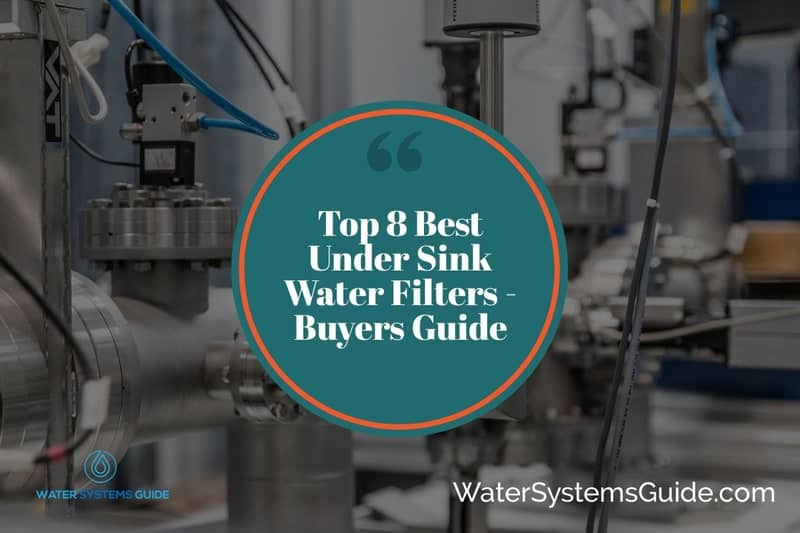





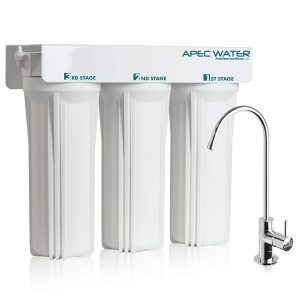


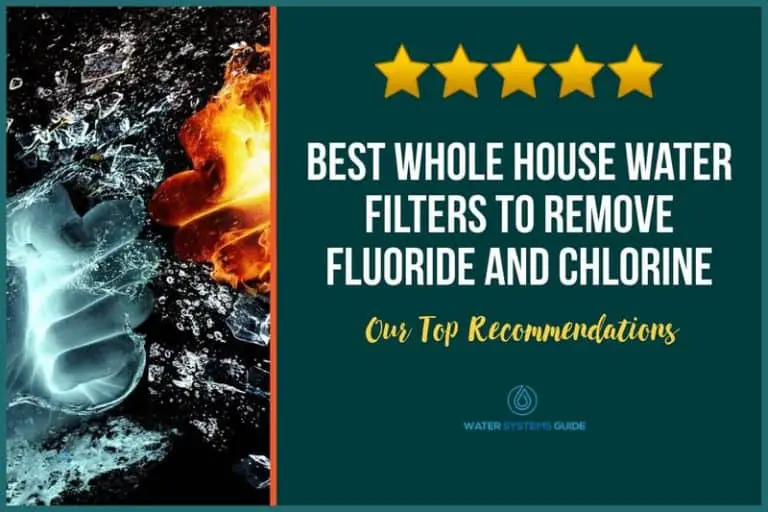
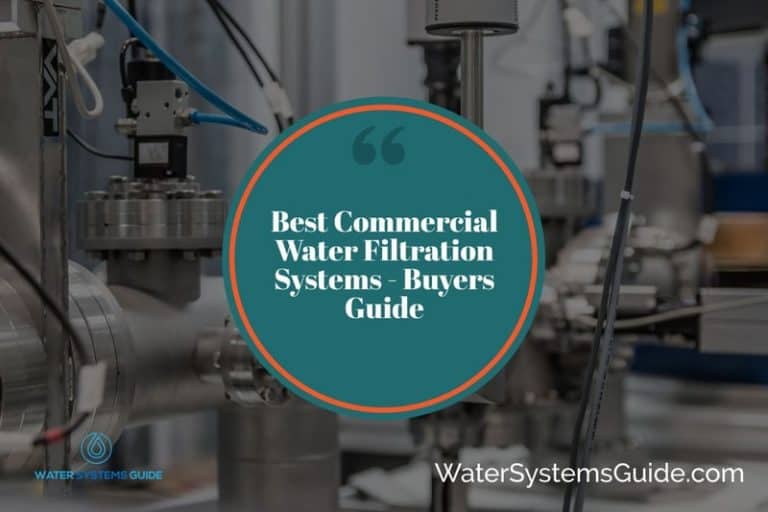
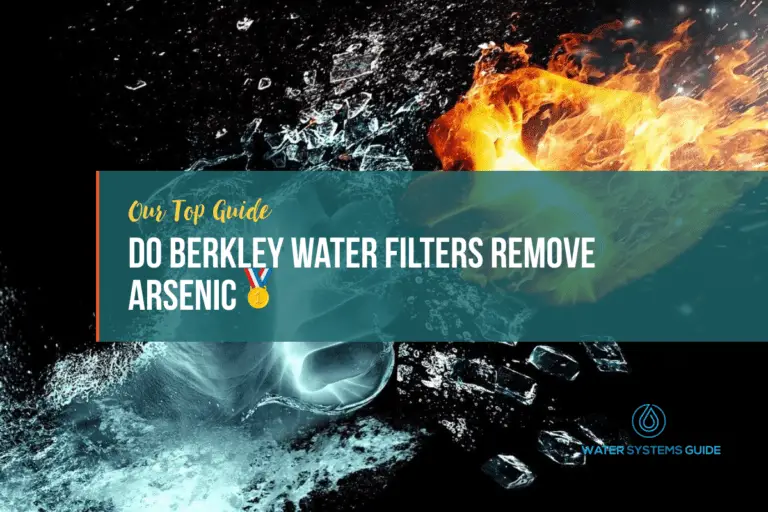
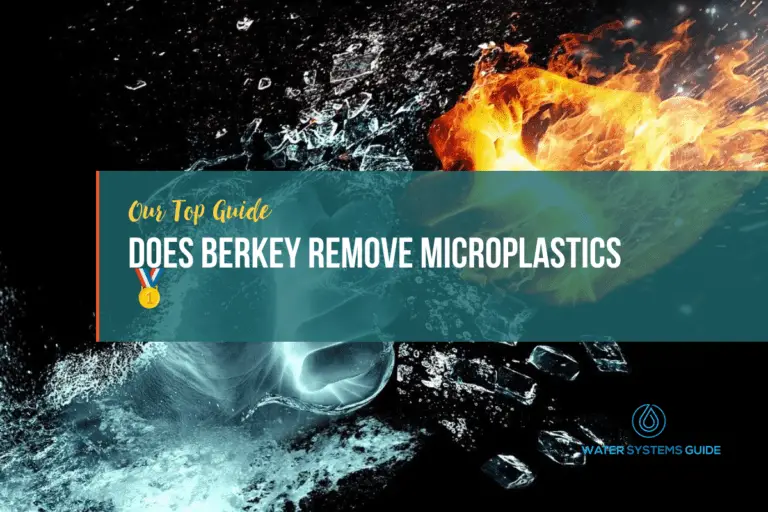
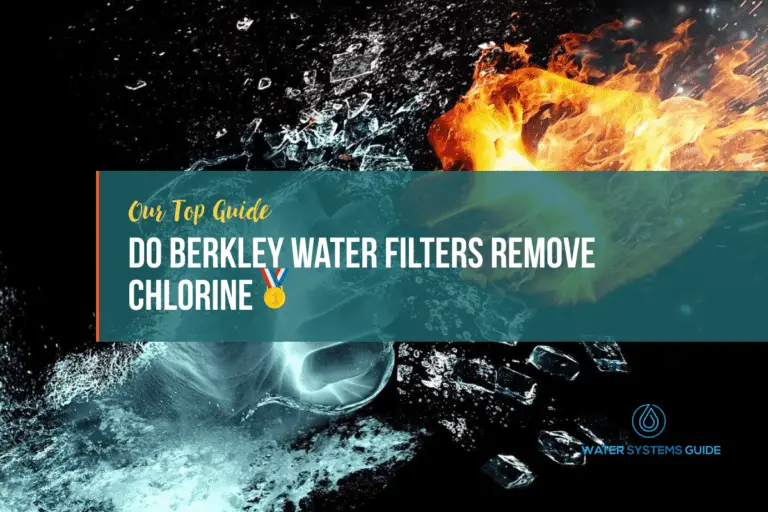
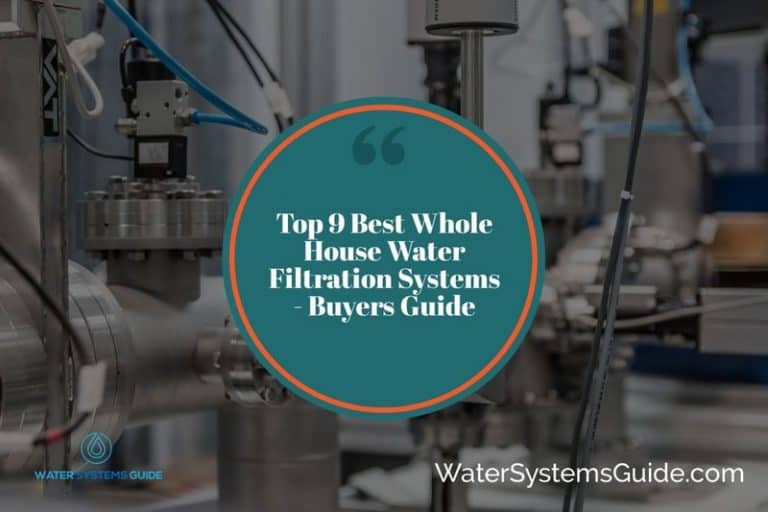
Our platform provides a large selection of prescription drugs for home delivery.
Anyone can quickly order treatments from your device.
Our inventory includes popular drugs and more specific prescriptions.
All products is supplied through reliable distributors.
https://images.app.goo.gl/bfmRqmjXo8PnPB1A7
We ensure discreet service, with secure payments and prompt delivery.
Whether you’re looking for daily supplements, you’ll find trusted options here.
Begin shopping today and enjoy trusted support.